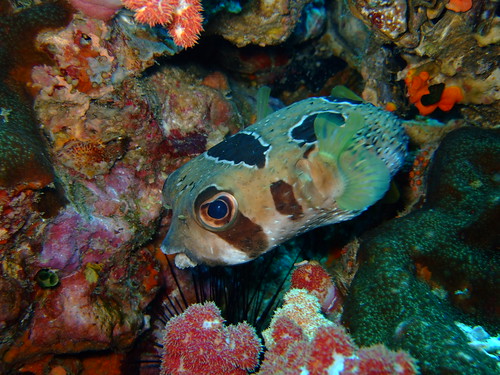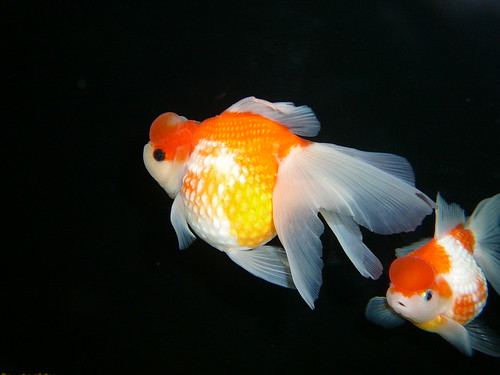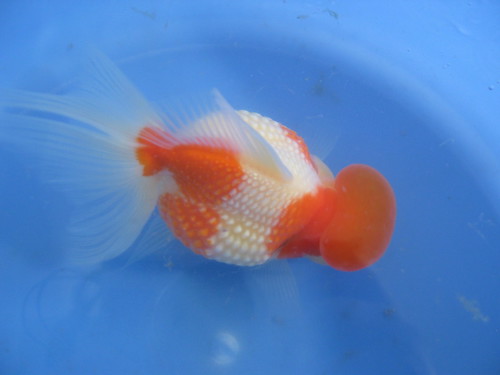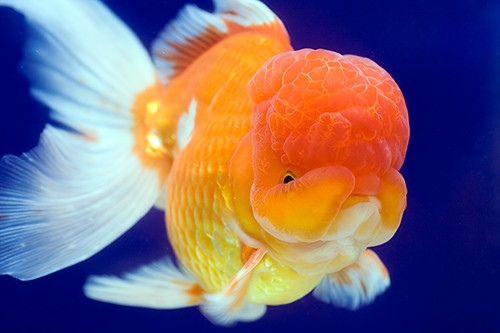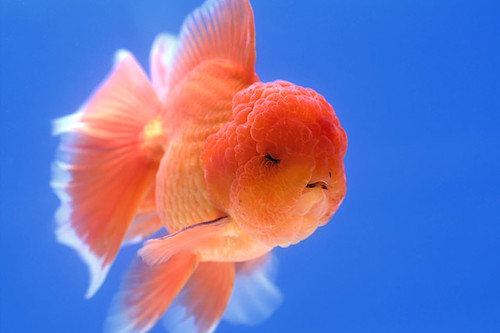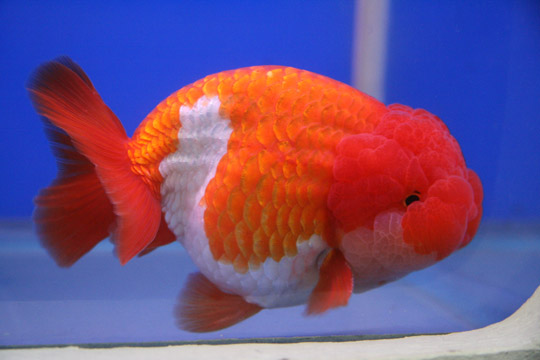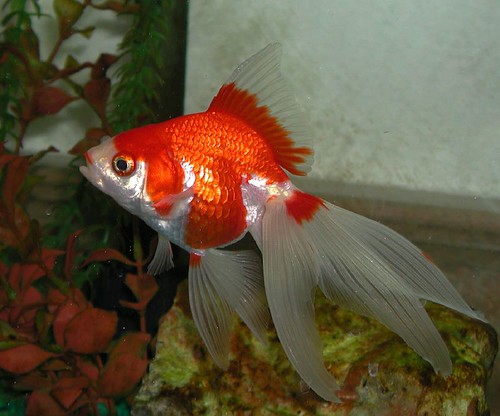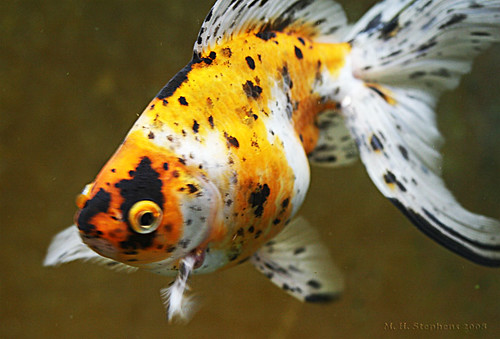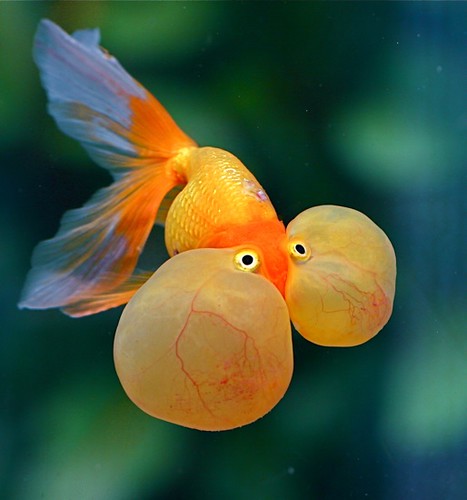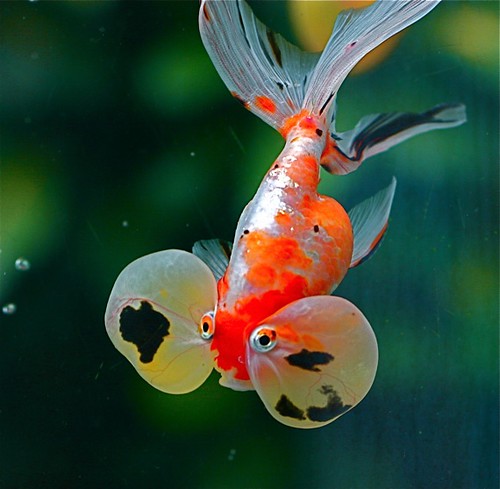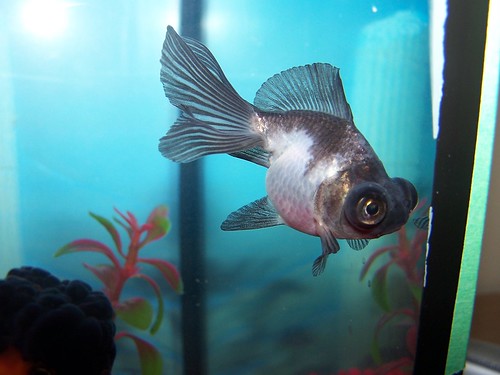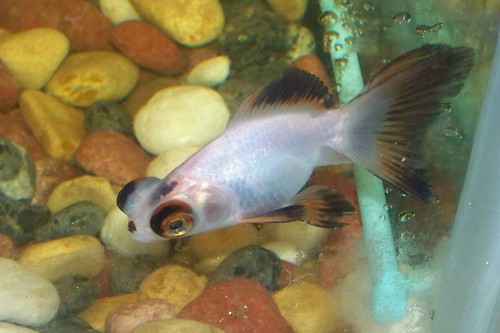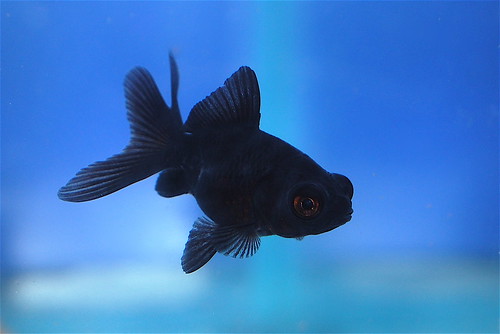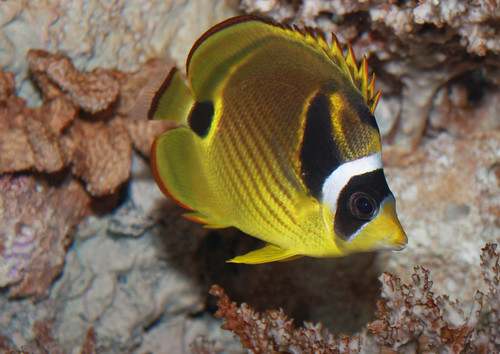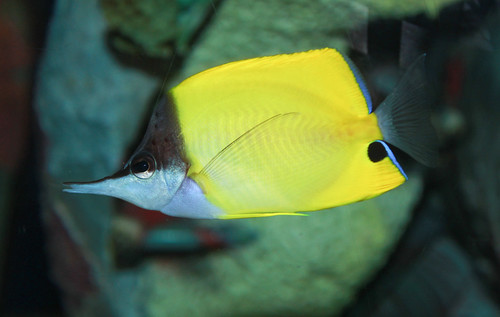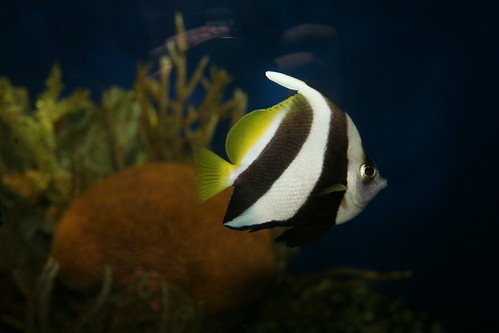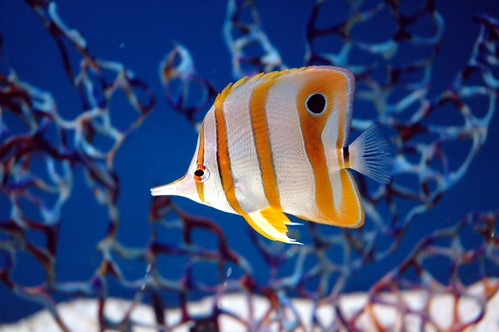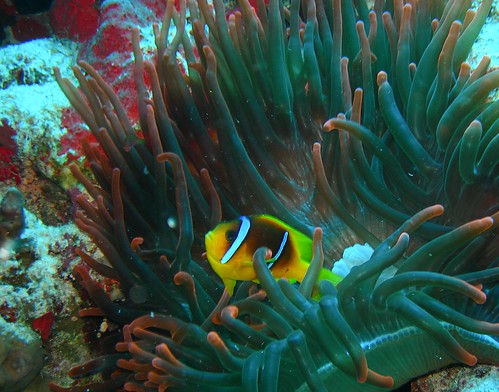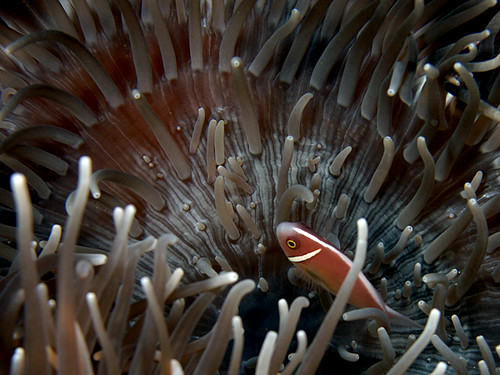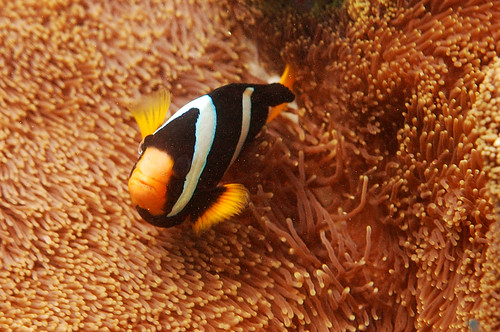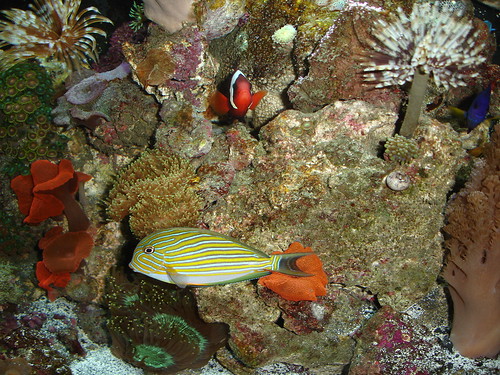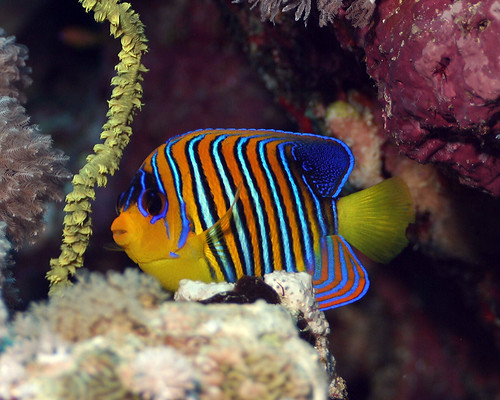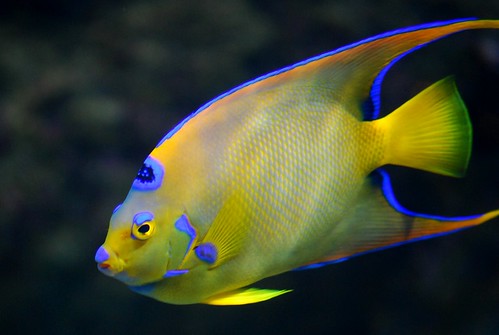The black moor is a telescope-eyed variety of fancy goldfish that has a characteristic pair of protruding eyes. It is also referred to as popeye, telescope, kuro demekin in Japan and dragon-eye in China.
Black Moors (Carassius auratus) have deep bodies and long, flowing finnage, along with characteristic protruding eyes. They are veiltailed and possess metallic scales with a velvet-like appearance.
Young Moors resemble bronze fantails. Their black coloration and eye protrusion develop with age. They can grow up to a length of 10 inches, but may not lose their velvet-like appearance with increasing age. Black demekins may also revert to metallic orange when exposed to warm water temperature. The fish can range in coloring anywhere from a lighter grey to a dark black, but most Black Moor goldfish don't stay pure black forever and many Of them change colors from a rust color underbelly to orange splotches.
Black moor goldfish are popular because they are hardy fish, and because their black color sets them apart from the more common gold color. Goldfish are typically easy to care for, surprisingly, black moors in particular are able to withstand a wide variety of temperatures but cannot withstand extreme temperatures.
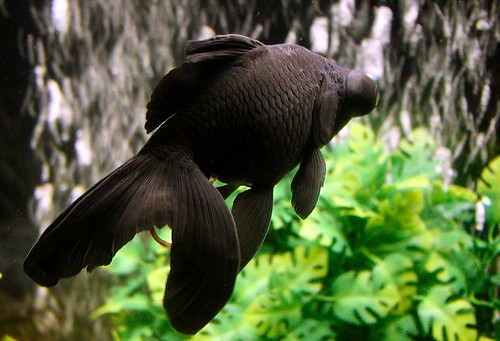 Black Moor Goldfish by bfraz
Black Moor Goldfish by bfrazRelated fish include the entire "telescope" family, and can appear in red, red-and-white, calico, black-and-white, chocolate, brown, blue, bronze, lavender and chocolate-and-blue, tricolored, and black coloration. Black moors with a deep solid black color are difficult to find but are more stable in moors than any other goldfish variety. Black-and-white moors are known as panda moors.
It was once theorised that blackness in goldfish are only exhibited by the telescope-eyed goldfish and that the black colour is only a permanent fixture with telescope eye goldfish. However, with the recent entry of black lionheads (ranchus), black orandas, black pearlscales and black hibunas, this view is no longer true.
In fact, black moors do sometimes throw normal-eye offsprings, and they are black also. However, they are rejected as they do not conformed to the telescope eye feature for the Moor variety.

